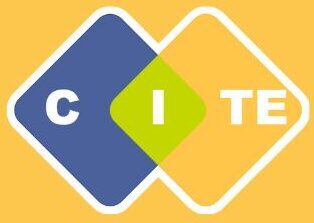How are you operationalizing equity?
There are many lenses we might use to help us think about promoting equitable digital/computing pedagogies for CUNY teacher candidates and K-12 students, including those below. Stay tuned for a revised version of our equity-centered CITE perspectives, and a more comprehensive synthesis of our values around equity, currently being created by CITE’s Equity Working Group.
- Attention to accessibility
- Universal Design for Learning
- Assistive Technology
- Vetting tools for students’ abilities, cultural and linguistic experiences, bias/stereotyping in representation.
- Culturally relevant and sustaining pedagogies
- NYS Culturally Relevant / Sustaining Education Framework
- NYC DOE CSforAll Equity page
- Intersecting equity lenses and projects (compiled by STEM Teaching Tools for Science teaching and learning)
- Translanguaging pedagogy – the stance that educators take up that builds on learners’ and their communities’ diverse language practices, their designs for learning environments, the shifts that educators make in the moment.
- Justice-centered computing – pluralistic approaches for reckoning with “…the historical realities, power dynamics, and material conditions that produce injustices, as well as how computing is implicated in them. And… associated strategies and tactics to support researchers, technologists, and educators in working within and challenging systems of oppression and domination” (Lachney et al., 2021)
- Culturally Relevant Computing – Tenets from Scott et al (2015): All students are capable of digital innovation; the learning context supports transformational use of technology; learning about one’s self along various intersecting sociocultural lines allows for technical innovation; technology should be a vehicle by which students reflect and demonstrate understanding of their intersectional identities; barometers for technological success should consider who creates, for whom, and to what ends rather than who endures socially and culturally irrelevant curriculum. Draws on notions from Ethnocomputing.
- Tenets from the Kapor Center‘s Culturally Responsive-Sustaining CS Education Framework: (1) Acknowledge racism in CS and Enact Anti-Racist Practices; (2) Create Inclusive and Equitable Classroom Cultures; (3) Pedagogy and Curriculum are Rigorous, Relevant, and Encourage Sociopolitical Critiques; (4) Student Voice, Agency, and Self-Determination are Prioritized in CS Classrooms; (5) Family and Community Cultural Assets are Incorporated into CS Classrooms; (6) Diverse Professionals and Role Models Provide Exposure to a Range of CS/Tech Careers
- Critical computing – Use computing as a potential channel for engaging with the political, moral and ethical challenges of the world, an examination of and resistance to oppressive power structures, including in technology fields and education (Proctor, Kafai & Lui, 2019)
- Digital civics and activism – Utilize or create digital tools to create and share artifacts that advocate for change, engage in or build community around issues
- Considering equity in decision-making about computing education (Santo et al., 2019):
- (1) equity in who CS is for
- (2) equity in how CS is taught
- (3) equity in what CS is taught
- (4) equity in why CS is taught
- (5) equitable processes for decision-making re: the above
What do you mean by “get under the hood”?
“Getting under the hood” means going beyond simply using and consuming tools as they were intended by designers
Teacher Candidates and K-12 learners might be encouraged to:
Use tools (as designers intended for them to be used)
- Use Zoom to…
- Use Padlet to…
- Use Jamboard to…
- Use Google Translate to…
- Use PowerPoint / G-Slides to make…
- Use FlipGrid to make…
- Interpret data from CODAP or Plotting Plots visualizations…
- Use Google sheets to make…
- Experience and analyze digital stories created across various platforms…
- Play Scratch projects to learn about…
Modify / Tinker with / Think critically about digital tools
- Use Excel formulas to make artwork on a spreadsheet…
- Try to “break” Google Translate by feeding it texts of different lengths, and seeing which translations make sense, and which don’t…
- Have a critical conversation about the algorithms that underlie common assessments, personalized learning software, book recommendation software, text complexity analyzers and other edtech
- Remix a Scratch project, a CODAP data story, a Plotting Plots graph, a Starlogo Nova model, or some other project created by your teacher to tell your own story, answer your own question, or model your own phenomena…
Creating your own programs and digital tools
- Use python to program a…
- Use App Inventor to design and code an app that…
- Use Scratch to code a new project that…
- Use Twine’s back-end environment to create a branching narrative on the front end that…
- Import a new dataset into CODAP or Plotting Plots to tell some stories


